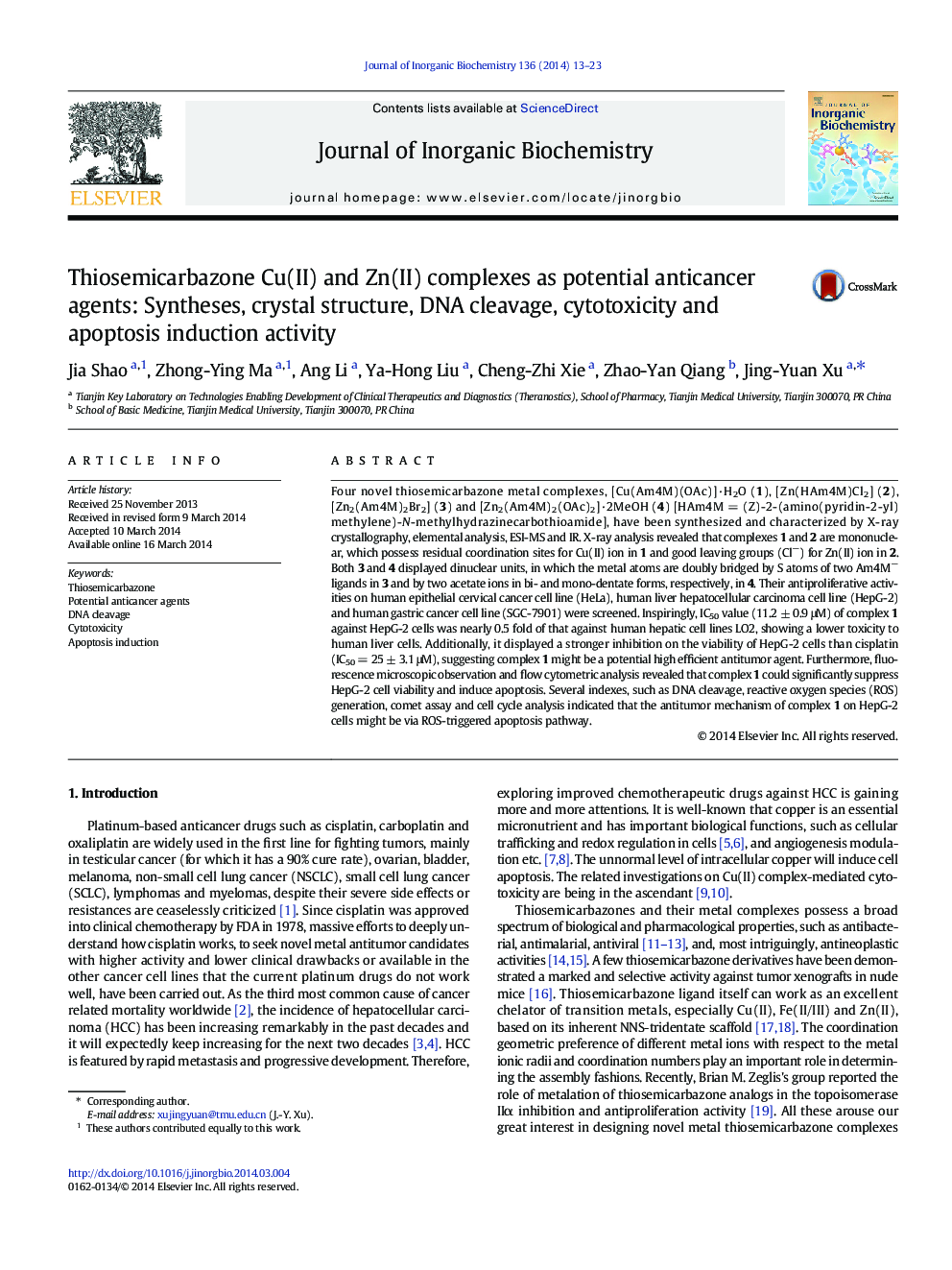| کد مقاله | کد نشریه | سال انتشار | مقاله انگلیسی | نسخه تمام متن |
|---|---|---|---|---|
| 1317370 | 1499451 | 2014 | 11 صفحه PDF | دانلود رایگان |

Four novel thiosemicarbazone metal complexes, [Cu(Am4M)(OAc)]·H2O (1), [Zn(HAm4M)Cl2] (2), [Zn2(Am4M)2Br2] (3) and [Zn2(Am4M)2(OAc)2]·2MeOH (4) [HAm4M = (Z)-2-(amino(pyridin-2-yl)methylene)-N-methylhydrazinecarbothioamide], have been synthesized and characterized by X-ray crystallography, elemental analysis, ESI-MS and IR. X-ray analysis revealed that complexes 1 and 2 are mononuclear, which possess residual coordination sites for Cu(II) ion in 1 and good leaving groups (Cl−) for Zn(II) ion in 2. Both 3 and 4 displayed dinuclear units, in which the metal atoms are doubly bridged by S atoms of two Am4M− ligands in 3 and by two acetate ions in bi- and mono-dentate forms, respectively, in 4. Their antiproliferative activities on human epithelial cervical cancer cell line (HeLa), human liver hepatocellular carcinoma cell line (HepG-2) and human gastric cancer cell line (SGC-7901) were screened. Inspiringly, IC50 value (11.2 ± 0.9 μM) of complex 1 against HepG-2 cells was nearly 0.5 fold of that against human hepatic cell lines LO2, showing a lower toxicity to human liver cells. Additionally, it displayed a stronger inhibition on the viability of HepG-2 cells than cisplatin (IC50 = 25 ± 3.1 μM), suggesting complex 1 might be a potential high efficient antitumor agent. Furthermore, fluorescence microscopic observation and flow cytometric analysis revealed that complex 1 could significantly suppress HepG-2 cell viability and induce apoptosis. Several indexes, such as DNA cleavage, reactive oxygen species (ROS) generation, comet assay and cell cycle analysis indicated that the antitumor mechanism of complex 1 on HepG-2 cells might be via ROS-triggered apoptosis pathway.
Four novel thiosemicarbazone-based Cu/Zn complexes were presented and [Cu(Am4M)(OAc)]·H2O (1) showed stronger cell viability inhibition on HepG-2 cells than cisplatin and weaker cytotoxicity in LO2 cells. Fluorescence, DNA cleavage, ROS generation, comet assay and cell cycle analysis were applied to investigate cellular action mechanism, suggesting via ROS-triggered apoptosis pathway.Figure optionsDownload as PowerPoint slide
Journal: Journal of Inorganic Biochemistry - Volume 136, July 2014, Pages 13–23